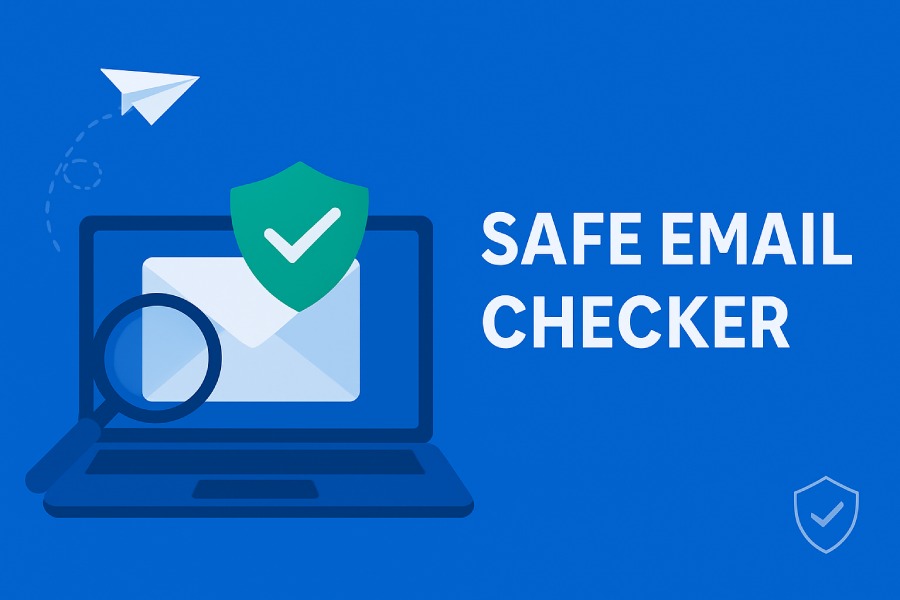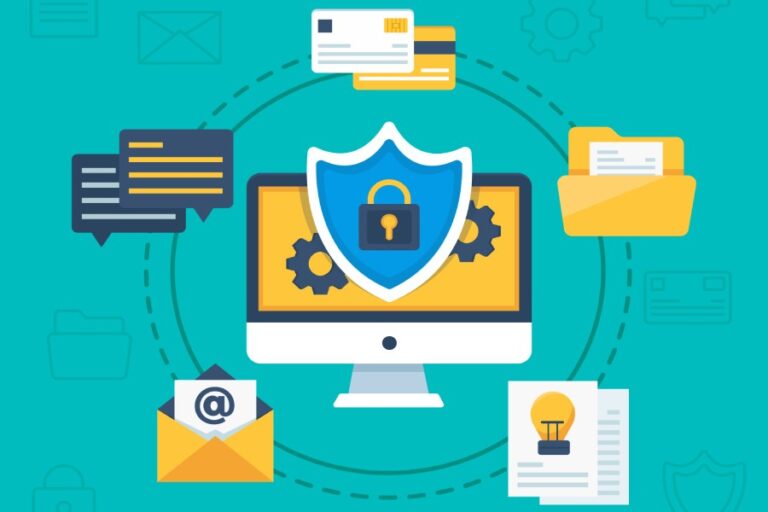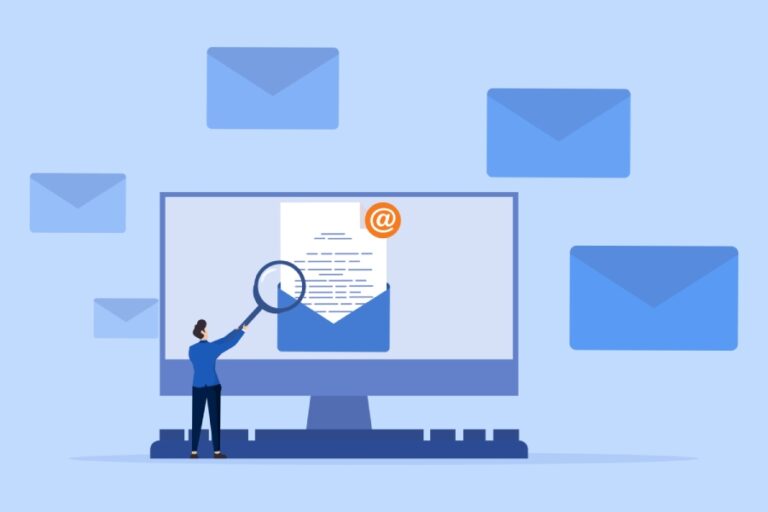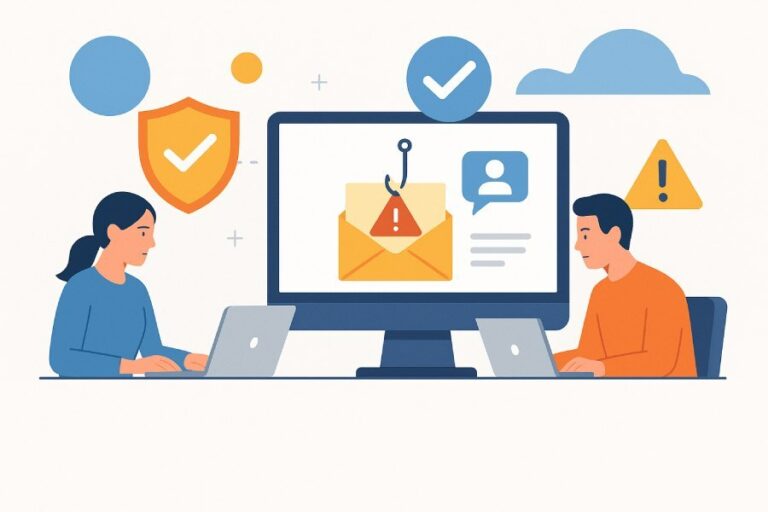Safe Email Checker: Verify Emails Before Sending To Avoid Spam
In today’s digital-first world, email remains one of the most powerful tools for business communication, marketing, and customer engagement. However, sending emails without proper verification can quickly damage your reputation, trigger spam filters, and waste valuable resources. Invalid, fake, or disposable addresses not only increase bounce rates but also put your domain at risk of blacklisting, making it harder for genuine messages to reach inboxes.
A Safe Email Checker helps you avoid these pitfalls by validating email addresses before you hit send. Through multi-layered checks such as syntax validation, domain verification, and SMTP testing, it ensures your messages are delivered to real, active inboxes. By filtering out risky or temporary emails, this tool safeguards your sender reputation, enhances deliverability, and protects your campaigns from being flagged as spam — ultimately keeping your communication secure, efficient, and trusted.
Understanding the Importance of Email Verification
In today’s digital communication landscape, ensuring email security and deliverability is paramount for businesses and individuals alike. Email verification and email validation stand as crucial steps in this process, enabling senders to confirm the authenticity and quality of their contact lists before dispatching messages. The core objective of these verification methods is to mitigate risks associated with email fraud prevention, phishing detection, and unwanted spam detection.
By addressing issues related to email list hygiene, such as removing invalid or disposable addresses through temporary email detection and disposable email check, organizations can substantially reduce bounce rates and protect their email sender reputation. Maintaining a clean email list supports higher email deliverability and improves overall campaign effectiveness. Moreover, through email address parsing and email address normalization, accurate classification and formatting of email contacts are ensured, which further enhances communication efficiency.
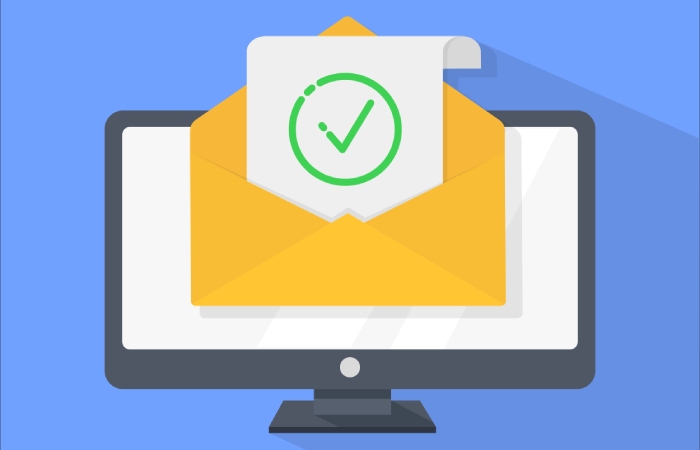
Several industry-leading solutions like ZeroBounce, NeverBounce, and Hunter.io specialize in delivering robust contact verification services that integrate multi-level validation techniques including SMTP verification, email syntax check, and domain validation.
What is a Safe Email Checker and How Does it Work?
A Safe Email Checker is an advanced tool that employs a combination of methods to verify and validate email addresses before users send emails. It combines functionalities such as email syntax check, SMTP verification, and domain age check to confirm both the structural correctness and active status of email addresses.
Key components include:
- Email syntax check: Ensures the format of the email conforms to standard conventions.
- SMTP verification: Connects with the mail server to verify that the mailbox exists and is able to receive emails.
- Domain validation: Confirms the domain’s validity and checks for its blacklisting status through email blacklist monitoring.
- Temporary email detection: Identifies and filters out disposable or temporary email addresses to maintain email address quality.
- Blacklist check and whitelist check: Evaluates whether the sender or recipient domains appear on known blacklists such as Spamhaus or reputational databases driven by entities like Cisco Talos.
Moreover, some safe email checkers incorporate email header analysis and IP reputation check to assess the background of the sender system, thereby contributing to enhanced email threat protection. Comprehensive implementations may integrate with email security gateways like Mimecast, Proofpoint, or Barracuda Networks to provide layered inbound email protection and outbound email protection.
Explore advanced safe email checkers that take multi-faceted approaches toward email fraud detection and email risk assessment, optimizing your overall email security posture.
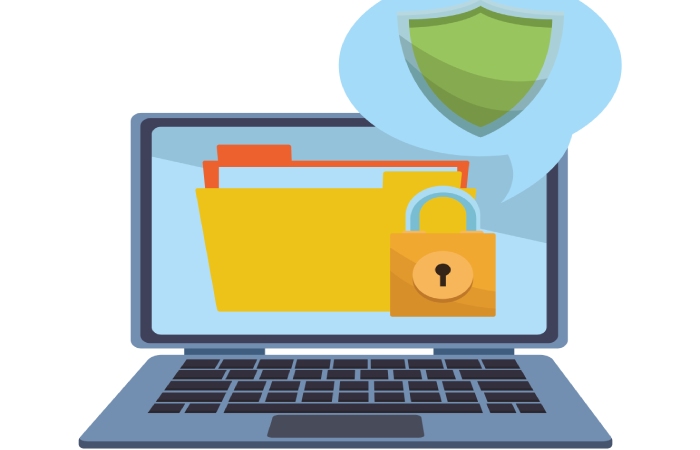
Common Causes of Emails Being Marked as Spam
Understanding why emails are flagged as spam is essential to mitigating risks and improving email deliverability. The most common reasons include:
- Poor email sender reputation: If a sender’s IP or domain has a history of sending spam, as documented by systems like Spamhaus or email blacklist monitoring tools, emails are more likely to be blocked.
- Failure of sender authentication mechanisms such as DKIM verification, SPF record check, and DMARC compliance can raise red flags for spam filters.
- Presence of malware or viruses in attachments triggers malware scanning and virus scanning algorithms in security layers such as Trend Micro Email Security or Symantec Email Security.
- High email spam score due to suspicious content, misleading subject lines, or excessive use of promotional keywords flagged by email filtering systems.
- Use of disposable email check tools to detect temporary addresses that often correlate with illegitimate recipients.
- Sending to invalid or obsolete emails that cause high bounce detection rates reduces sender credibility with email bounce management solutions.
- Lack of email encryption can cause failure in secure transport protocols, undermining trustworthiness and possibly triggering spam filters.
- Indications of phishing attempts detected by anti-phishing tools and email threat protection frameworks employed by consultants like Microsoft Defender for Office 365 or Google Safe Browsing.
It is vital to perform thorough email fraud prevention and risk assessments using trusted platforms such as Clearout or EmailListVerify to minimize spam occurrences and optimize campaign reach.
Key Features to Look for in a Safe Email Checker
When selecting a Safe Email Checker, professionals should prioritize several critical features to ensure comprehensive protection and validation:
1. Comprehensive Email Verification Techniques
Top tools offer multi-layered verification including SMTP verification, email syntax check, domain validation, email header analysis, and IP reputation check, which collectively guarantee high accuracy. For example, services like BriteVerify (now part of Validity) are known for accurate email address quality assessments.
2. Integration with Spam and Phishing Detection Tools
Advanced checkers incorporate spam detection and phishing detection functionalities, integrating with threat intelligence solutions such as Proofpoint or Cisco Talos, providing real-time insights on email threats.
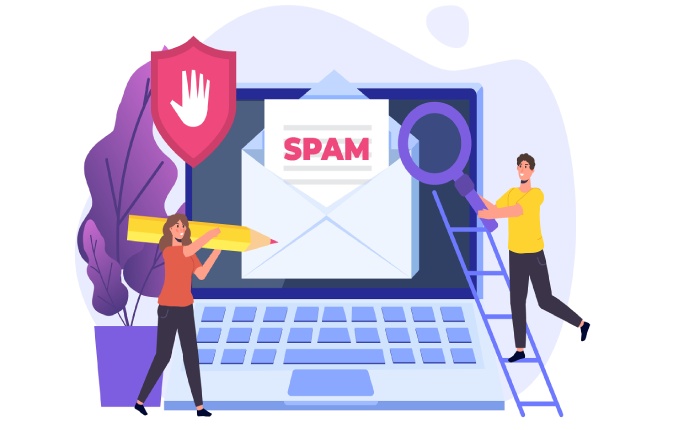
3. Support for Anti-Fraud and Anti-Spam Compliance
Ensuring capability for DKIM verification, SPF record check, and DMARC compliance is essential for supporting sender authentication, critical for preventing spoofing and improving sender credibility.
4. Bounce and Risk Management
Robust systems provide actionable data through bounce detection and email bounce management analytics, enabling organizations to maintain exceptional email list hygiene and reduce spam complaints.
5. Security Features
The best platforms incorporate email security gateway functionalities, including email encryption, malware scanning, and virus scanning, safeguarding both outbound and inbound communications. Solutions such as Kickbox and VerifyBee emphasize these features to strike a balance between email deliverability and stringent email fraud detection.
How Email Verification Improves Deliverability Rates
Email verification plays a vital role in improving deliverability by ensuring messages are sent only to genuine, active recipients. By validating addresses through checks like SMTP verification and domain validation, senders can reduce bounces, avoid temporary or fake emails, and protect their sender reputation from unnecessary damage. This not only saves resources but also prevents emails from being filtered as spam.
Maintaining a verified list also supports authentication protocols such as SPF, DKIM, and DMARC, which build trust with email providers and enhance inbox placement. Clean lists lower spam scores and improve compatibility with security solutions like Symantec, Trend Micro, and Microsoft Defender. Using trusted tools such as NeverBounce, EmailListVerify, or Mailgun helps organizations safeguard their reputation, stay off blacklists, and maintain a secure, reliable email ecosystem.

Step-by-Step Guide to Using a Safe Email Checker
Implementing a robust email verification process is essential for maintaining email deliverability and combating email fraud prevention strategies. A typical safe email checker workflow includes multiple layers of validation to ensure the email address quality in your database.
- Email Syntax Check: This initial step verifies the basic format and structure of the email address, ensuring compliance with RFC standards. Tools like Hunter.io and Verifalia provide advanced parsing and email address normalization to catch errors early.
- Domain Validation and Domain Age Check: Confirm that the domain exists and is active. Verifying domain health reduces the risk of sending to expired or temporary domains, often associated with spam or temporary email detection.
- SMTP Verification: The process involves simulating mail delivery to the recipient server to confirm if the mailbox is valid without sending an actual email. This is crucial for reducing bounce detection rates and improving email list hygiene.
- Disposable Email Check: To prevent fake or throwaway addresses that degrade email sender reputation, tools like ZeroBounce and EmailListVerify excel at identifying and filtering such addresses.
- Spam Detection and Phishing Detection: Advanced email risk assessment includes checking for suspicious patterns indicating spam or phishing attempts. Integration with email security gateways such as Proofpoint or Mimecast enables detection of malicious payloads, assisting in malware scanning, virus scanning, and email threat protection.
- Blacklist and Whitelist Checks: Running blacklist check queries against databases like Spamhaus helps confirm whether sender IPs or domains have poor email reputation. Conversely, validating against whitelists ensures trusted senders bypass unnecessary filtering, improving email deliverability.
Performing these steps with reputable platforms ensures reliability; many vendors offer APIs that integrate seamlessly into email marketing or CRM workflows, promoting automated contact verification and reducing manual errors.
Benefits of Incorporating Email Verification into Your Workflow
Integrating email validation into your operational processes offers numerous advantages across IT security, marketing, and compliance domains:
- Improved Email Deliverability: Regular email bounce management through validation reduces undeliverable emails, ensuring your messages reach intended recipients. This safeguards your email sender reputation and lowers the risk of being flagged as spam by ISPs or spam filters.
- Enhanced Email Security: By incorporating spam detection, phishing detection, and malware scanning, organizations bolster defenses against cyber threats targeting email communication. Services like Microsoft Defender for Office 365 provide robust email threat protection built on these principles.
- Reduced Risk of Email Fraud: Validated emails support sender authentication methods such as DKIM verification, SPF record check, and DMARC compliance, which collectively improve email authenticity and decrease instances of email spoofing or impersonation.
- Efficient Resource Management: By maintaining email list hygiene, organizations reduce costs associated with sending emails to invalid addresses and enhance the accuracy of their customer outreach.
- Regulatory Compliance: Keeping your email list clean helps comply with GDPR and CAN-SPAM regulations by minimizing unsolicited and erroneous email transmission.
A practical example includes using services like NeverBounce or Kickbox to integrate email address parsing and real-time validation into your CRM workflows.
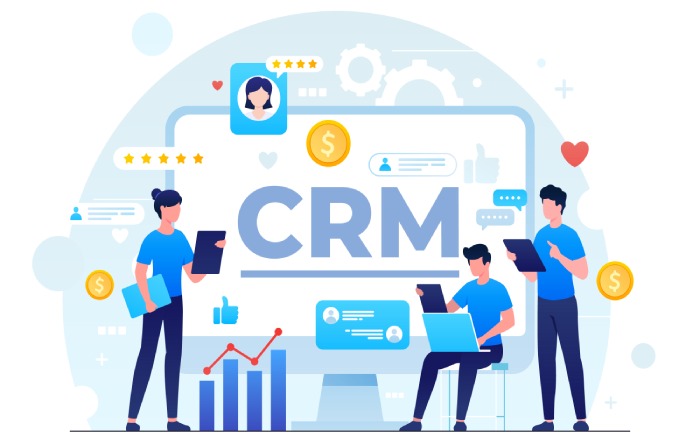
Comparing Popular Safe Email Checker Tools on the Market
Selecting the right safe email checker depends on your specific needs—whether it be marketing accuracy, security focus, or compliance. Below is a comparative overview of several leading platforms:
- ZeroBounce: Known for comprehensive email bounce management, spam detection, and disposable email check. ZeroBounce incorporates AI to improve email address quality and offers detailed reports including email risk assessment.
- NeverBounce: Offers rapid SMTP verification coupled with excellent contact verification features, suitable for bulk list cleaning with real-time API support.
- Hunter.io: Primarily recognized for email address normalization and verification, Hunter.io excels in email syntax check and email deliverability improvements for sales and marketing teams.
- Clearout: Focuses on helping businesses maintain email list hygiene by identifying temporary email detection and providing bounce detection with a high degree of accuracy.
- BriteVerify (Validity): Offers seamless integration with marketing platforms and features email blacklist monitoring, blacklist removal assistance, and emphasizes email deliverability.
- EmailListVerify: Provides efficient email validation, email fraud detection, and multi-layered verification including disposable email check.
The role of security-focused providers like Trend Micro Email Security, Symantec Email Security, and Barracuda Networks is critical for those seeking integrated email filtering and email threat protection alongside traditional validation.
For a detailed technical health check of email infrastructure, platforms like MXToolbox can aid in verifying SPF record check, DKIM verification, and DMARC compliance status, enriching your sender authentication protocols.
Best Practices for Maintaining a Clean Email List
To ensure ongoing success in email security and email deliverability, organizations should adopt systematic practices:
- Regular Email Verification: Conduct periodic checks of your contact lists via trusted tools such as Verifalia or Mailmeteor’s Email Checker to identify invalid or outdated addresses.
- Implement Email Address Parsing and Normalization: Standardize email formats to prevent duplicates and maintain consistency across databases.
- Enforce Sender Authentication Protocols: Maintain proper SPF record check, DKIM verification, and DMARC compliance to reduce vulnerability to spoofing and increase email authenticity.
- Monitor Email Reputation and Blacklist Status: Employ continuous email blacklist monitoring through services like Cisco Talos and Spamhaus to proactively identify and resolve blacklisting issues.
- Detect and Remove Disposable or Temporary Emails: Filter out throwaway accounts promptly to improve open rates and protect against fraudulent users.
- Use Bounce Detection and Management Tools: Automate removal or suppression of hard bounces to maintain list hygiene.
- Leverage Email Encryption and Security Gateways: For sensitive communications, ensure email content is protected with industry-standard encryption and routed through robust email security gateways such as Mimecast or Proofpoint.
Following these best practices enhances both your campaign efficiency and your organization’s overall email security posture.
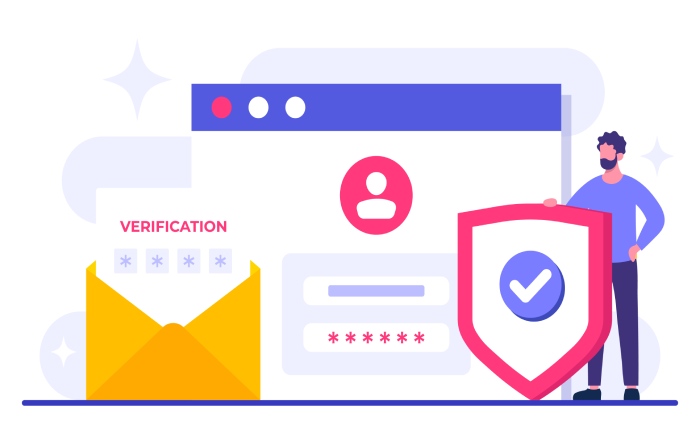
Future Trends in Email Verification Technology
The landscape of email verification continues to evolve with advancements in automation, AI, and security technologies. Several emerging trends are set to redefine email risk assessment and email fraud detection capabilities:
- AI-Powered Verification Algorithms: Machine learning models trained on vast datasets enable more accurate spam detection, phishing detection, and email authenticity scoring, surpassing traditional heuristic checks.
- Advanced Email Header Analysis: Future tools will provide deeper insight into complex email header metadata, enhancing capabilities for email fraud detection and sender authentication refinement.
- Integrated Threat Intelligence: Combining extensive data from platforms like Google Safe Browsing and Microsoft Defender for Office 365 will lead to more effective email threat protection and email filtering solutions.
- Real-Time Feedback Loops: Rapid response systems will enable dynamic updating of email blacklist monitoring and email reputation metrics, helping organizations adjust strategies continuously.
- Enhanced Support for Encryption and Privacy: As regulatory compliance tightens, expect broader adoption of email encryption techniques integrated with verification tools for secure, trustworthy communication.
- Expansion of API-Based Verification Services: Providers like Kickbox and VerifyBee will enhance their APIs for seamless incorporation into omnichannel marketing and security workflows.
Staying abreast of these trends ensures organizations maintain resilient, efficient communications infrastructure aligned with evolving cyber security challenges.
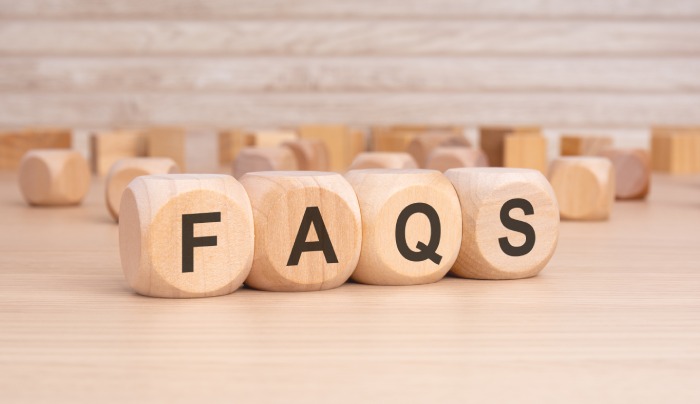
FAQs
What is the difference between email verification and email validation?
Email verification generally refers to the comprehensive process involving checks like SMTP verification, blacklist check, and domain validation to confirm both format and deliverability. Email validation often focuses more narrowly on syntax and domain legitimacy but may not guarantee mailbox existence or spam risk.
How does SPF record check and DKIM verification improve email security?
Both SPF and DKIM are sender authentication protocols. SPF record check verifies authorized IP addresses for sending domains, while DKIM verification ensures message integrity via cryptographic signatures. Together with DMARC compliance, they reduce phishing and spoofing risks by increasing email authenticity.
Why is disposable email check important for email list hygiene?
Disposable or temporary emails degrade email sender reputation and often result in hard bounces or fraudulent activity. Performing disposable email check filters these out, improving email deliverability and reducing risk from spammers or bots.
Can email verification prevent phishing attacks?
While email verification improves message email authenticity and helps prevent email fraud detection, dedicated layers like anti-phishing tools, email header analysis, and malware scanning are necessary for comprehensive phishing detection and email threat protection.
How often should email lists be cleaned?
Regular maintenance—at least quarterly—is recommended to manage email bounce management, remove invalid entries, and update email blacklist monitoring records. Organizations with high volume sending may benefit from more frequent checks.
Are there APIs available for integrating email verification into CRM systems?
Yes, many platforms such as Hunter.io, ZeroBounce, and NeverBounce offer APIs for automating contact verification directly in email marketing and CRM tools, enhancing workflow efficiency.
Key Takeaways
- Multi-layered email verification including syntax, domain validation, SMTP checks, and blacklist monitoring are essential for maintaining email address quality and improving email deliverability.
- Incorporating email verification enhances email security by reducing spam, phishing risks, and enabling stronger sender authentication protocols like SPF, DKIM, and DMARC.
- Leading tools such as ZeroBounce, NeverBounce, and Hunter.io provide comprehensive solutions spanning email bounce management, disposable email check, and real-time API integrations.
- Consistent application of best practices like removing disposable addresses, monitoring blacklists, and leveraging email security gateways ensures clean, compliant email databases.
- Future developments leveraging AI, integrated threat intelligence, and advanced header analysis will significantly enhance email risk assessment and email fraud detection capabilities.

